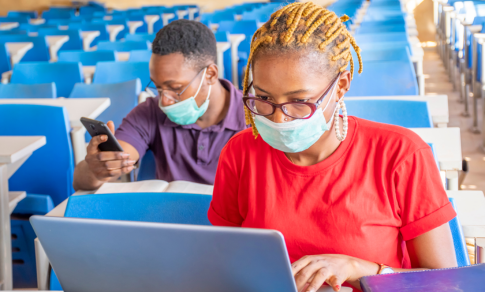The educational landscape in Nigeria is undergoing a significant transformation, driven by the emergence of peer-to-peer (P2P) learning apps. These platforms leverage technology to connect students directly, fostering collaborative learning outside traditional classroom settings. With Nigeria facing challenges like limited access to quality education and overcrowded classrooms, P2P learning apps offer an innovative solution. This article explores their rise, focusing on technological advancements, accessibility, and current examples shaping Nigerian EduTech.
Read more about Tech
Technological Advancements Driving P2P Learning
Advancements in mobile technology and internet penetration have catalyzed the growth of P2P learning apps in Nigeria. According to Ojediran et al., the proliferation of smartphones and affordable data plans has enabled digital learning platforms to flourish, particularly in urban areas. Apps like Passnownow utilize these advancements by providing a digitized curriculum that facilitates peer collaboration and self-study. This aligns with global trends where mobile-assisted language learning (MALL) enhances engagement, as noted by Yuen and colleagues in their study on language learning apps. However, the reliance on technology raises concerns about digital literacy among students and educators, suggesting that while innovation drives progress, it must be paired with training to maximize impact.
Register to attend the Connect Nigeria Business Mixer
Enhancing Accessibility and Equity
P2P learning apps address Nigeria’s educational disparities by making resources accessible to underserved populations. UNICEF highlights the Nigeria Learning Passport, which has reached 280,000 users, including rural learners, by offering offline capabilities and local language content. ScholarX’s LearnAM platform exemplifies this, providing affordable education in languages like Yoruba and Hausa, reaching over 20,000 students. Yet, challenges persist, such as poor internet connectivity in remote areas, as documented by Adeoye and Adeoye, who argue that infrastructural gaps limit equitable access. These platforms thus represent a promising yet imperfect tool for democratizing education.
Sign up for the Connect Nigeria daily newsletter
Current Examples and Their Impact
Practical examples like Passnownow and Prepclass illustrate the transformative potential of P2P learning in Nigeria. Passnownow enables students to collaborate on exam preparation for tests like WAEC and JAMB, fostering peer-led study groups. Prepclass connects learners with tutors, facilitating personalized P2P interactions, and has supported over 6,500 students. These platforms not only enhance academic performance but also build social learning networks. However, their success depends on consistent funding and user adoption, areas where government support could amplify impact, as suggested by Agbata in Punch Newspapers. Critical examination reveals that while these apps thrive, their scalability remains constrained by socioeconomic factors.
Got a suggestion? Contact us: [email protected]
Conclusion
The rise of P2P learning apps in Nigeria reflects a shift toward collaborative, technology-driven education. While technological advancements and accessibility improvements fuel their growth, challenges like infrastructure and digital literacy require attention. Current examples demonstrate their potential, yet sustained investment is crucial for broader reach. As Nigerian EduTech evolves, P2P learning apps could redefine educational paradigms, provided systemic barriers are addressed.

